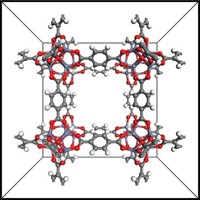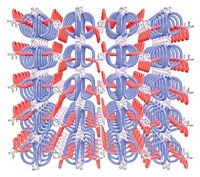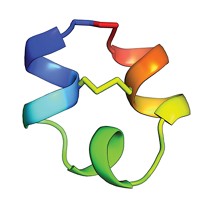Advertisement
Grab your lab coat. Let's get started
Welcome!
Welcome!
Create an account below to get 6 C&EN articles per month, receive newsletters and more - all free.
It seems this is your first time logging in online. Please enter the following information to continue.
As an ACS member you automatically get access to this site. All we need is few more details to create your reading experience.
Not you? Sign in with a different account.
Not you? Sign in with a different account.
ERROR 1
ERROR 1
ERROR 2
ERROR 2
ERROR 2
ERROR 2
ERROR 2
Password and Confirm password must match.
If you have an ACS member number, please enter it here so we can link this account to your membership. (optional)
ERROR 2
ACS values your privacy. By submitting your information, you are gaining access to C&EN and subscribing to our weekly newsletter. We use the information you provide to make your reading experience better, and we will never sell your data to third party members.
Metal-Organic Frameworks
Finding pillars of strength for MOFs
Adding functional groups to metal-organic frameworks can reinforce a flimsy structure
by Neil Savage, special to C&EN
July 5, 2018

The highly porous, large-surface-area structures known as metal-organic frameworks (MOFs) are popular for chemical sensing, gas separation, and catalysis. But they have a weakness: They can be flimsy. Some of the metal and ligand constructions form less robust lattices, and their pore walls can be stretched or broken, rendering them useless. Using a computer model, a group of researchers has now shown that adding chemical groups to the organic ligands in MOFs can shore up the structures and make them more robust (ACS Cent. Sci. 2018, DOI: 10.1021/acscentsci.8b00157).
The team focused its work on zeolitic imidazolate frameworks (ZIFs), a type of MOF usually composed of zinc and the ligand imidazolate, which can take on many different arrangements. The researchers made computational models of 200 potential ZIFs and calculated the mechanical robustness of each, using experimental and modeled data on the constituent materials. They found that by adding functional groups to the ligands, they could reinforce the existing structure of the ZIFs.
The effect is analogous to the ancient Greeks’ use of caryatids, statues that were decorative but also acted as pillars to hold up a temple. “If you put them at the right place, they’re not only pretty, but they help support the building,” says Berend Smit, a chemical engineer at Swiss Federal Institute of Technology, Lausanne. Decorating the ligands with functional groups has a similar effect on MOFs.
Two aspects of the structure affected the MOFs’ mechanical stability. A primary network consisted of the basic MOF structure held together by bonds between the metal atoms and the ligands. The functional groups created a secondary network held together by weaker van der Waals forces. Depending on the arrangement of that secondary network, it could either strengthen or weaken the mechanical stability of the primary network.
Smit and his colleagues plan to make their computer model available for free. He hopes that chemists looking to design a MOF will use it to test out different combinations of ligands and functional groups and then synthesize the ones that look promising. The team focused on ZIFs because existing experimental data on these materials allowed them to validate their methods, but Smit says their approach is generally applicable to other MOFs. Although his group has not synthesized any of the MOFs from their model, he plans to collaborate with another group that can build them. To test the MOFs’ mechanical strength, they’ll use microindentation, physically pressing a tiny diamond tip against the structures to determine their hardness.
Advertisement
Smit doesn’t expect that chemists will be able to avoid structural weakness in all MOF designs, even with the help of this model. Some structural tweaks might boost a MOF’s strength but block the active sites, interfering with its intended application. “Sometimes the answer may be we can’t do anything about it without affecting the chemistry,” Smit says.
Omar M. Yaghi, a chemist at the University of California, Berkeley, who has added struts to synthesized MOFs to stabilize them, praises this work. For the first time, researchers have correlated functional groups and mechanical stability in MOFs, he says. And chemist Joseph T. Hupp of Northwestern University says, “This is a very clever paper that identifies and makes use of a non-obvious, but potentially very widely applicable, approach to making MOFs mechanically stable.”





Join the conversation
Contact the reporter
Submit a Letter to the Editor for publication
Engage with us on Twitter